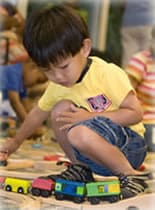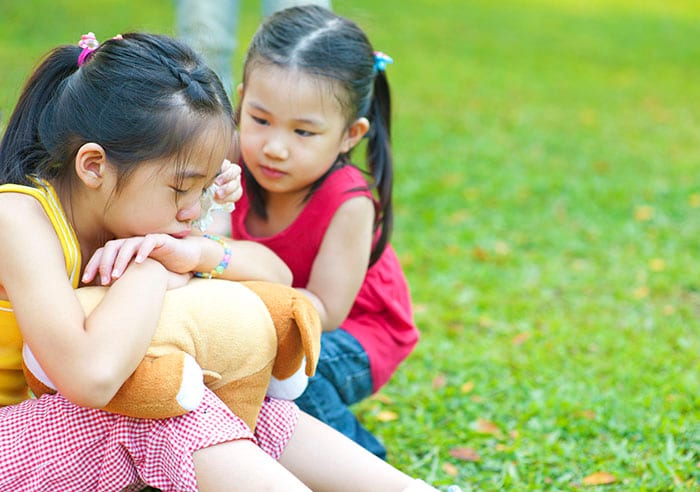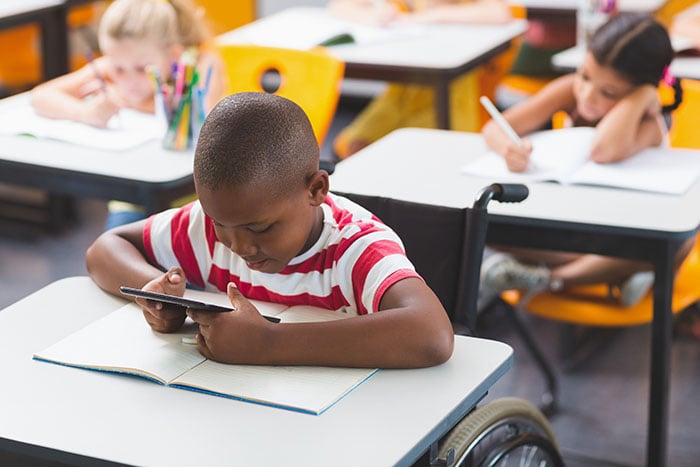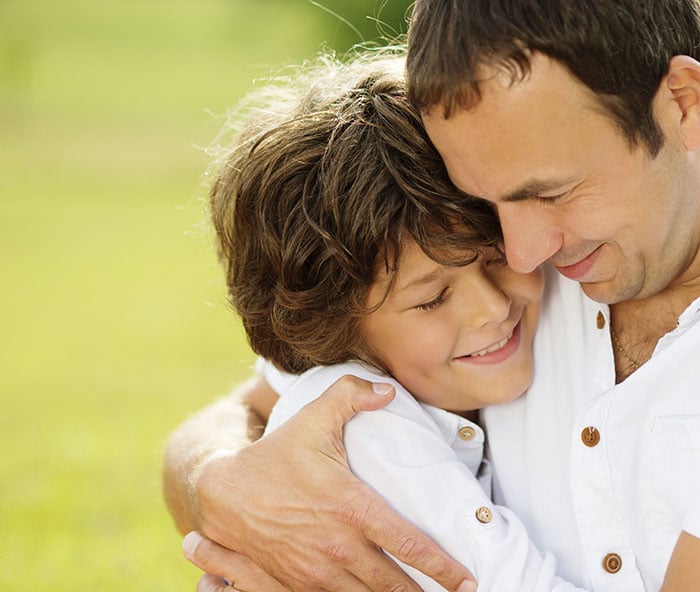Caring for Children in Disasters
- Details
- Published on Monday, 11 December 2017 08:14
Children are more vulnerable than adults in emergency situations. Take steps to protect children.

How Children are Different
Disasters affect children differently than they do adults. Learn more about the unique needs of children during and after disasters.

- Children’s bodies are different from adults’ bodies.
- They are more likely to get sick or severely injured.
- They breathe in more air per pound of body weight than adults do.
- They have thinner skin, and more of it per pound of body weight (higher surface-to-mass ratio).
- Fluid loss (e.g. dehydration, blood loss) can have a bigger effect on children because they have less fluid in their bodies.
- They are more likely to lose too much body heat.
- They spend more time outside and on the ground. They also put their hands in their mouths more often than adults do.
- They are more likely to get sick or severely injured.
- Children need help from adults in an emergency.
- They don’t fully understand how to keep themselves safe.
- Older children and adolescents may take their cues from others.
- Young children may freeze, cry, or scream.
- They may not be able to explain what hurts or bothers them.
- They are more likely to get the care they need when they have parents or other caregivers around.
- Laws require an adult to make medical decisions for a child.
- There is limited information on the ways some illnesses and medicines affect children. Sometimes adults will have to make decisions with the information they have.
- They don’t fully understand how to keep themselves safe.
- Mental stress from a disaster can be harder on children.
- They feel less of a sense of control.
- They understand less about the situation.
- They have fewer experiences bouncing back from hard situations.
Helping Children Cope with Emergencies
Regardless of your child’s age, he or she may feel upset or have other strong emotions after an emergency. Some children react right away, while others may show signs of difficulty much later. How children react or common signs of distress can vary according to age. Knowing how to help children cope after an emergency can help them stay healthy in future emergencies.

Children Face Unique Risks in an Emergency
Children are vulnerable in an emergency because they may not be able to communicate important information clearly. A child’s ability to communicate who they are and who their parents are depends on the child’s age and development level. Children with intellectual or developmental disabilities or long-standing health problems may need special support services, including medicine and medical equipment, which typically are not available in traditional shelters. In addition, children requiring medical services are not legally able to provide consent for treatment.
Children also face heightened risks in an emergency because of the following:
- Developmental risks: Disruption to children’s schooling, housing, friendships, health care, and family networks can affect children’s ability to advance emotionally, socially, and academically.
- Protection risks: Without adequate adult support and guidance, children may not receive the care, protection, shelter, and transportation they require when an emergency strikes. Children, separated from their parents or trusted adults, may be especially vulnerable to mistreatment. Rapid family reunification minimizes these risks to children.
- Physical needs: Infants and young children in emergency shelters have different nutritional needs than adults and require age-appropriate supplies, such as baby formula, diapers, clothes, and a safe sleeping surface (for example, a crib or baby box).
- Medical needs: Treating children requires specialized training, equipment, and medicines, and children are physically more susceptible to chemical, biological, and nuclear threats.
Factors that Influence the Emotional Impact on Children in Emergencies
The emotional impact of an emergency on a child depends on a child’s characteristics and experiences, the social and economic circumstances of the family and community, and the available resources in the surrounding environment. The following specific factors may affect a child’s emotional response:
- Direct exposure to the emergency
- Previous exposure to trauma
- Belief that the child or a loved one may die
- Separation from caregivers
- Physical injury
- How parents and caregivers respond
- Inner resources of the family and the relation and communication patterns among family members
- Repeated exposure to mass media coverage of the emergency and aftermath
- Cultural differences
- Community resilience
Additional Resources
Emergency Preparedness and You
Real Stories- Reunification Plans
More Information on Helping Children Cope
Before, During and After an Emergency
Regardless of your child’s age, he or she may feel upset or have other strong emotions after an emergency. Some children react right away, while others may show signs of difficulty much later. How children react or common signs of distress can vary according to age. Knowing how to help children cope after an emergency can help them stay healthy in future emergencies.
An emergency can happen anywhere and at any time. It is important for parents to know what steps they can take before, during, and after an emergency to protect their family. Parents ensure that family members are ready and know what to do when emergencies happen.
Before an Emergency
A little preparation now can make a big difference later.
Here are some steps you can take to help keep your family safe and healthy when an emergency happens:
- Prepare an emergency kit that includes a 3-day supply of necessities for each person in your family, such as food, medicine, water, games, flashlight, and special toys to help keep your children calm during an emergency.
- Make a plan to contact family members, especially if you are not together when an emergency strikes. If your children are old enough, teach them how to call 911 and memorize important phone numbers. Create a reunification plan as part of the family communication plan to reunite you with your loved ones as soon as it is safe to do so.
- Review with your children the different types of emergencies that can happen in your area and the warning signs for those emergencies. For example, if tornadoes are common, your children should know what to do during a tornado. This includes knowing the signs of an approaching storm and instructions on how to take shelter during a tornado.
Be informed, stay informed, and get vital information, such as emergency warnings and alerts, from reliable news sources and your local emergency management agency.
Getting your children to help with preparing for an emergency can teach them the basics of staying safe and will make emergencies less stressful because they will be prepared and empowered. Ask them what items they think should go in an emergency kit and plan. CDC’s Ready Wrigley’s checklists for children can help them identify supplies for an emergency kit, including items for pets, and develop a family communication plan. Use the Ready Wrigley activity books to help your children understand how they can stay safe in different types of emergencies that can happen in your community.

Help protect your child during the school day.
In the United States, about 69 million children are separated from their parents or caregivers every work day to attend school or child care. You can help protect your children, even when you are not with them, through the following steps:
- Find out the school or childcare center’s emergency plans. Every school and childcare center should have a written emergency plan with information, such as how to contact parents in an emergency and where children will go if evacuated. Also, ask how you can contact the school or childcare center during an emergency and how parents and caregivers will reunite with their children.
- Update your emergency contact information. Make sure that the school has up-to-date emergency contact information for your child. Notify the school every time your address or phone number changes. Keeping a backpack emergency card with your child is one way to make sure that emergency contact information – as well as other important information like medications and allergies – is handy.
During an Emergency
Different emergencies may require different actions. Protect your family by knowing what to do.
Each emergency is different and may require different actions to keep you and your family safe. Local authorities will share safety instructions and updates on television, radio, the Internet, or social media pages, like Twitter and Facebook. Depending on the emergency, authorities may ask you to stay where you are (“shelter in place”), or they may recommend that you go somewhere else (“evacuate”).
If you have children in a school in the exposed area, school authorities may evacuate your children to a safer place or emergency shelter. In these cases, do not go to your children during the emergency. This can put you and your children at greater risk. Wait until emergency or school authorities say it is safe for you to pick up your children.
Learn more about what you can do in different emergencies:
Additional Resources
Stay Tuned to Learn How to Evacuate
Stay Put – Learn How to Shelter in Place
After an Emergency
Recovery can take time. Get the support you need to help you and your child in the aftermath of an emergency.

Reuniting After an Emergency
Children may be away from their parents – or accidentally separated– during an emergency. Having a reunification plan and knowing reunification resources can help you reunite with your loved ones as soon as it is safe to do so.
Helping Children Cope
Regardless of your child’s age, he or she may feel upset or have other strong emotions after an emergency. Some children react right away, while others may show signs of difficulty much later. How children react or common signs of distress can vary according to age. Knowing how to help children cope after an emergency can help them stay healthy in future emergencies.
Additional Resources
Emergency Preparedness and You
Real Stories- Reunification Plans
How do I find my family? Resources
More resources are available on the CDC website here.


